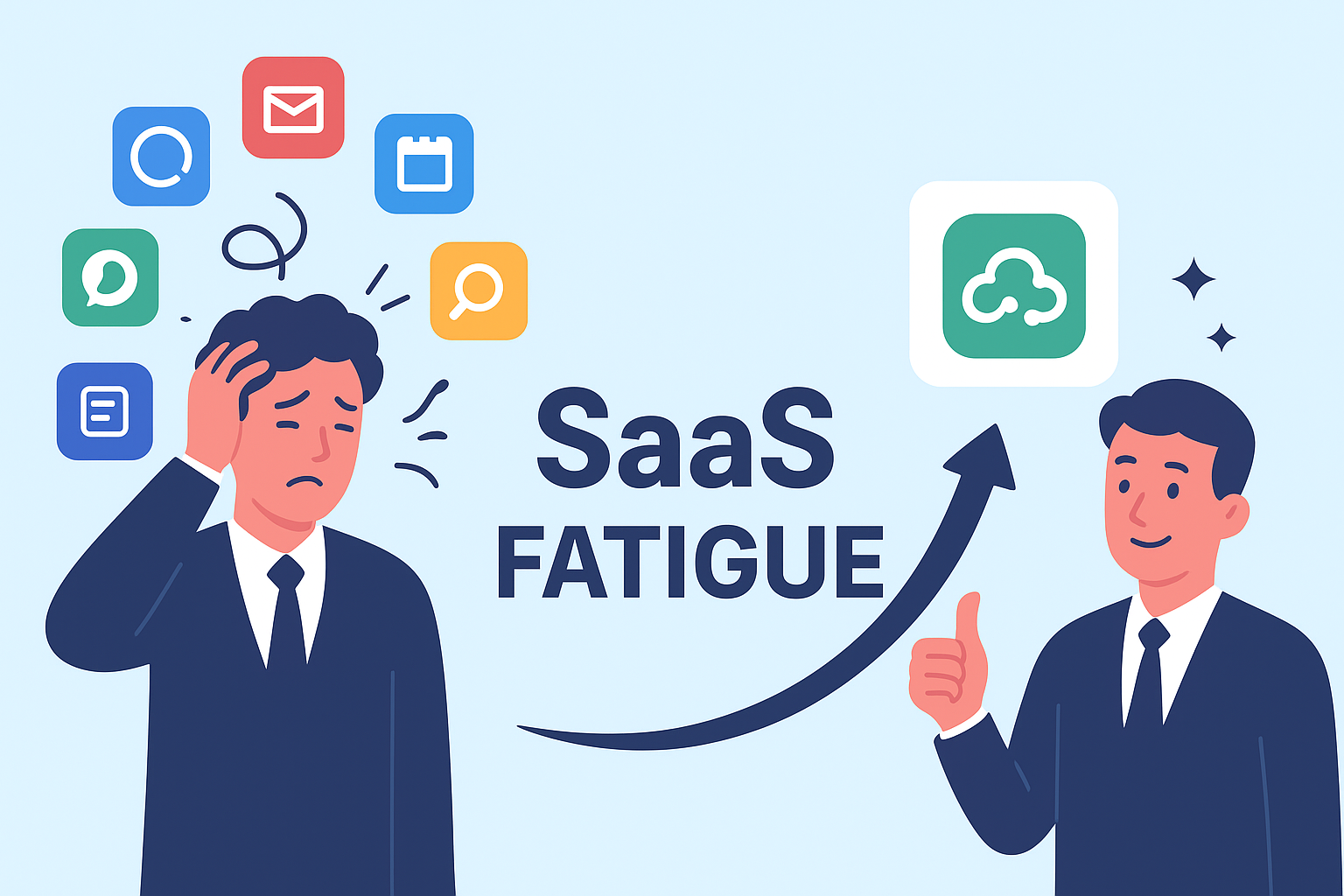
The End of SaaS Fatigue: How Smart Stacks Are Replacing Dozens of Subscriptions
Introduction: The SaaS Overload Problem
If you’ve ever opened your credit card bill and wondered, “Why am I paying for 17 different subscriptions?”, you’re not alone.
In 2025, most startups and small businesses are dealing with SaaS fatigue: too many tools, too many logins, and too much wasted money.
I’ve experienced this myself. I used to juggle apps for marketing, design, customer support, project management, and automation. At first, it felt like freedom, but soon, it became a mess of overlapping features and unnecessary costs.
That’s why a new trend is emerging: smart SaaS stacks. Instead of using 20 separate apps, businesses are consolidating into lean, AI-powered systems that do more with less.
What Is SaaS Fatigue?
SaaS fatigue happens when businesses rely on too many subscription-based tools at once.
Symptoms include:
- Paying for multiple apps that do the same thing.
- Wasting time switching between platforms.
- Difficulty tracking usage and ROI.
- Employee frustration with tool overload.
It’s not just annoying, it’s expensive. Some reports suggest that businesses waste up to 30% of their SaaS spending on unused or duplicate subscriptions.
The Rise of Smart SaaS Stacks in 2025
Smart stacks are the antidote to SaaS fatigue.
Instead of signing up for dozens of apps, businesses are now:
- Consolidating functions into fewer platforms.
- Using AI-powered automation to replace multiple tools.
- Customizing workflows rather than adapting to rigid software.
The idea isn’t “more tools = more productivity.” It’s “fewer, smarter tools = more clarity and efficiency.”
How Businesses Are Building Smart Stacks
I’ve noticed three main strategies businesses are using in 2025:
1. All-in-One Platforms Over Point Solutions
Instead of paying for 10 specialized apps, companies are opting for all-in-one platforms that cover multiple workflows (project management, communication, automation).
This not only saves money but also reduces cognitive load for teams.
2. AI as the Glue Between Apps
Businesses are relying on AI agents to connect different tools together, so they don’t need separate software for every small task.
For example, instead of hiring 5 SaaS apps for scheduling, emailing, analytics, and reporting, an AI-driven workflow can orchestrate it all in one place.
3. Pay-As-You-Go Over Monthly Subscriptions
The traditional SaaS pricing model, fixed monthly fees, is being challenged. Smart businesses are shifting to usage-based pricing, where they only pay for what they use.
This keeps costs flexible and prevents “subscription creep.”
The Business Value of Smarter SaaS Stacks
Why are companies making the switch? Because the value is undeniable:
✅ Lower Costs: Cutting down overlapping tools saves thousands annually.
✅ Simplified Workflows: Teams stay focused instead of drowning in logins.
✅ Better Adoption: Employees actually use the tools provided (instead of ignoring them).
✅ Scalability: AI-powered stacks grow with the business, without requiring endless add-ons.
The Cultural Shift: From Tool Collecting to Tool Mastery
In the 2010s, businesses chased new apps because they wanted to stay “modern.” In 2025, the mindset has flipped.
It’s no longer about collecting the most tools; it’s about mastering a lean, efficient stack.
Startups, especially, are realizing that agility comes not from adding complexity, but from streamlining and focusing on the few tools that actually drive outcomes.
Challenges of Smart Stacks
Of course, smart stacks aren’t perfect. Businesses still face challenges:
- Integration gaps: Not all platforms play well together.
- Over-reliance on AI: Too much automation can reduce human oversight.
- Vendor lock-in: Fewer tools mean greater dependence on specific providers.
The solution isn’t blind consolidation. It’s thoughtful stack-building, picking tools that truly align with business goals.
The Future: Leaner, Smarter, AI-Driven SaaS
By 2030, we’ll look back at the “era of 20+ subscriptions” the same way we look back at floppy disks — a necessary but clunky phase.
The future of SaaS is lean, integrated, and AI-first. Businesses will no longer need to manage endless dashboards. Instead, they’ll rely on one smart stack that adapts to them.
Conclusion: Less Is the New More
SaaS fatigue is real, but it doesn’t have to define your business.
In 2025, the winners aren’t the companies with the most subscriptions. They’re the ones with the smartest, leanest stacks.
By focusing on consolidation, AI integration, and smarter pricing, businesses are discovering that less really is more.
👉 My advice? Don’t chase every new SaaS that pops up. Instead, build a stack that’s simple, powerful, and aligned with your vision. That’s the real key to beating SaaS fatigue.